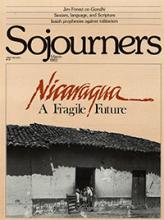Cows graze next to the capital city's only skyscraper. The 18-story edifice rises out of downtown Managua, a field laced by roads and dotted with abandoned buildings that have stood for a decade as they are now; among some of the ruins squatters have made their homes. Downtown Managua is a political comment on power and poverty, a parable of U.S. influence around the globe.
The lone building that brushes the Nicaraguan sky is the Bank of America. For years it has stood tall as a symbol of U.S. economic and political power in Central America. As if to say that U.S. power was unshakable, the bank alone stood through the 1972 Managua earthquake, while the rest of the downtown buildings bowed to the earth's awesome force.
For decades there was another symbol of U.S. power in Central America: the name Somoza. The history dates back to the beginning of the century, when the U.S. government forced out Nicaragua's president and established a puppet regime. The new U.S.-backed regime safeguarded the interests of U.S. mining and fruit companies, as well as ensured Nicaragua's strategic importance for inter-oceanic travel and military campaigns (the Bay of Pigs invasion was later launched from Nicaragua's shores). To enforce U.S. control, the Marines occupied the country from 1911 to 1933.
In the late 1920s and early '30s, a small man emerged with great prominence in Nicaragua. His name was Augusto Cesar Sandino. Sandino was a beloved leader committed to improving the plight of the poor, particularly through literacy training. He was a nationalist who loved the people of his country and was determined to free them from U.S. imperialism, fighting the Marines until Franklin D. Roosevelt finally withdrew them.
Read the Full Article

